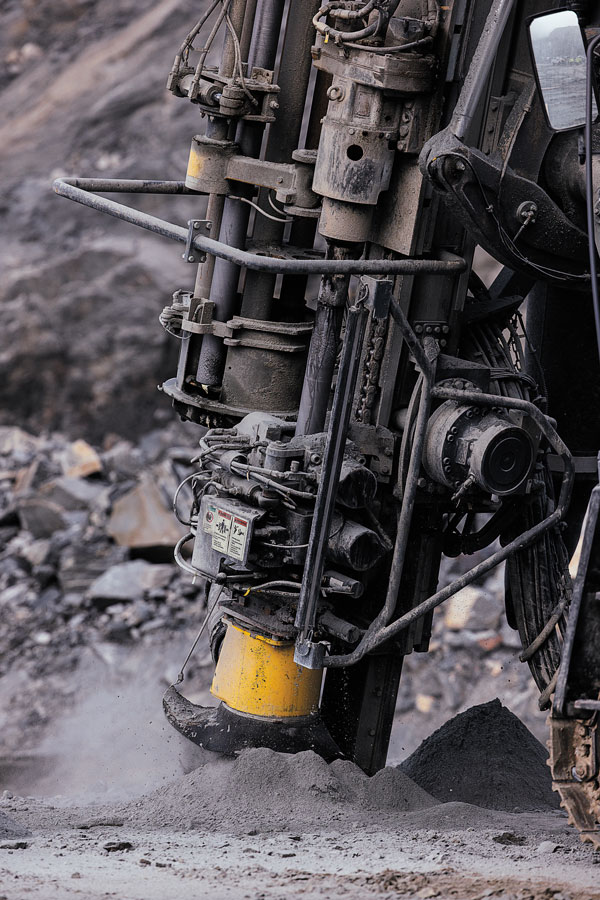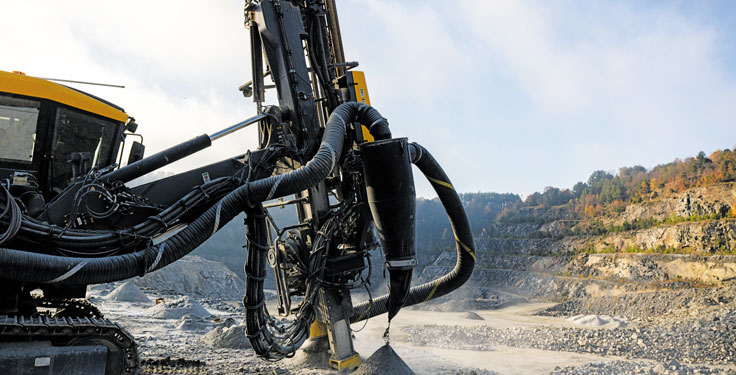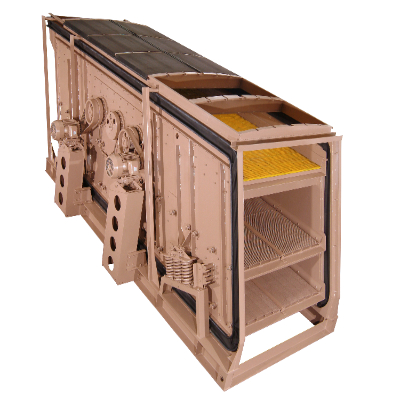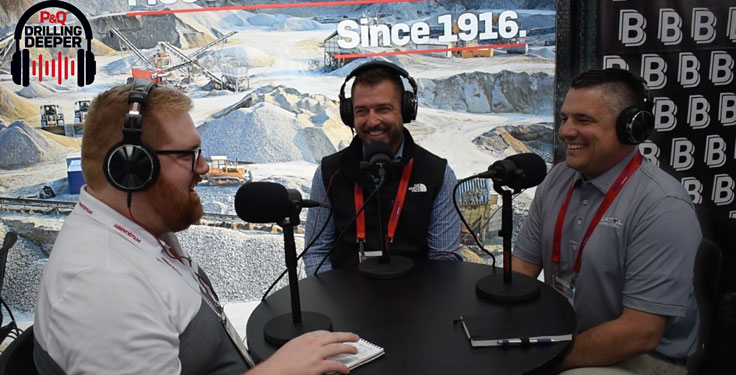It’s 7:30 a.m. on the East Coast.
The sky is a dark, inky gray with a dense haze of fog permeating the air. Headlights appear in the distance, moving slowly but steadily in and out of the plant.
The sound of an automated drill hums, greeting the quarry’s occupants. The drill is a SmartROC D60 from Epiroc, and it’s equipped with a GPS-enabled hole navigation system (HNS) that’s proving its worth against the challenging geology at Luck Stone’s Spotsylvania Plant in Fredericksburg, Virginia.
Luck Stone has always been an early adopter of technology. Founded in Virginia in 1923, the company was one of the first aggregate producers to convert its crushers from steam to electric power. It also had the first automated plants dating back to the late 1970s.
“We love technology,” says Bryan Smith, a mine development and blasting manager, who’s been with the family-owned and operated company for 43 years. “We try to be smart about it – how we’re going to deploy it, what we’re going to use it on – and think it through. But we love what technology can do.”
Long-standing partnerships are also critical to Luck Stone. While the company was familiar with Epiroc, its dealer, James River Equipment, made the introduction and provided drill servicing.
Northern Virginia Drilling, a Luck Stone contractor for more than 25 years, also saw the value in Epiroc’s technology and embraced the company’s drills for its own work – both in and outside of Luck Stone quarries.
According to Smith, the gravitation to Epiroc was natural. Having owned and operated a number of drills from other suppliers, he says Epiroc drills stand out.
“When we compare Epiroc drills to other drills, is it as good or better than other drills?” he asks. “We feel, yes.”
Then & now

Prior to using Eprioc’s smart drill rigs, of which Luck Stone now has eight, operations depended on human operators and driller perception.
Countless hours could be lost hand drawing complicated tight shots on paper, laying out tape and painting rocks – only to have weather erase the paint or an ill-placed tire shuffle rocks out of alignment.
To test what these tech-enabled rigs were capable of, Luck Stone performed a trial of Epiroc’s HNS-enabled measure-while-drilling (MWD) system, combined with 3GSM shot planning, at its Rockville, Virginia, plant between August 2022 and January 2023.
According to Epiroc, MWD tech allows for both visual and numerical analysis on rock mass prior to drilling, resulting in safer and more accurate operations. The conditions at the Rockville Plant are good, Epiroc adds, with the metavolcanic shoots well compared to most. Over a five-month trial, drilling and blasting information was tracked, showing improvements that excited Luck Stone.
As Epiroc describes, the results made Luck Stone eager to experiment at the Spotsylvania Plant, which has an established quarry with multiple production lifts and where the rock condition is much more challenging.
Fragmentation is less than desired. Significant jointing with almost no voids or cavities presents blasting challenges and causes irregular faces, heavy burdens, poor floor and oversize rock. There was no better way to test the technology than in this challenging geology.
Related: Selecting the right bits for rotary drilling












